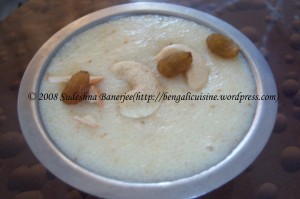We’ve moved to own domain name – bengalicuisine.net. You can follow me on Twitter, visit my Flickr photostream.
This is my fiftieth post here on this blog. I thank all my blog visitors for giving me the courage and inspiration to go ahead and write new posts on my blog, and most of all I thank my parents and sister. My mom who taught me to love the art of cooking, and my father though never enters the kitchen always find it tempting to know whats cooking on my blog. My little sister who is always busy taking photographs of every step and every ,eal I cook, when I am at home in Kolkata.
To mark this happy event for me, I have prepared a typical dish which hails from Chittagong in Bangaladesh‘. Now, this is a bit tricky, why should I be cooking something that sounds and tastes like a typical Bangladeshi dish. The answer is simple, my grandfathers, both from my father’s as well as from my mother’s sides were inhabitants of then unpartitioned Bengal. After the partition in 1947, they came and settled in Kolkata. As everybody say you can take out the Bengali from Bengal, but not the Bengal from the Bengali, so was it. At home our cooking style resembles those of the people of Bangladesh, though I am the third generation who is living in India and never had a luck to see the place where my grandparents were born and lived the best days of their lives.
Morichut is a typical naming for any curry in their native language of Chittagong. I love this one with eggs and aubergines. Morichut also can be made using potatoes. May be I’ll write a post on that sometime later.
Serves 2
Ingredients:
Aubergine (Choto Begun): 200gms
Onion (Peyaj): 1 medium size
Eggs (Dim): 2
Mustard Oil (Sarser Tel): ½ teaspoon
Turmeric Powder (Halud Guro): ½ teaspoon
Green Chili (Kacha Lanka): 1 or 2
Salt to taste
Preparation:
- Heat oil in a shallow wok
- Add the onions to sauté as the oil gets heated
- Toss in the aubergine cut into small square shaped pieces and fry till they are partly cooked
- Add salt, turmeric and the green chili
- Keep aside the half cooked egg plants, and heat 1 teaspoon of oil and add the eggs.
- Scramble the eggs and add it to the half cooked aubergine
- Cook till the aubergine gets cooked
It tastes good with roti, paratha or even rice. So cook it and have with anything you like.
Look for more update on this blog, till then Happy Cooking and Happy Eating .
You can also Subscribe to BengaliCuisine by Email, or Subscribe in a reader









































